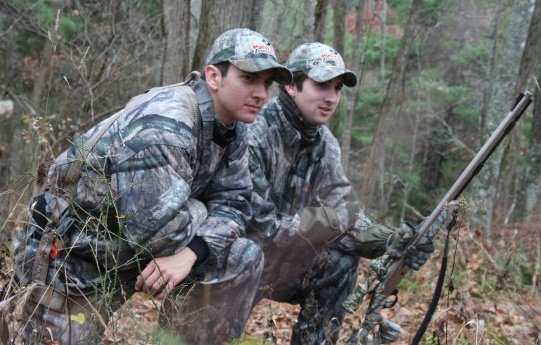When westward expansion really kicked off in the 1800s deer populations across the country were decimated. Deer were a main source of food, and with no regulations nor understanding of the consequences, deer numbers were reduced to nearly extinction. In the1900s it was realized that something was going to have to be done in order to restore these numbers. The problem was, as was the case in the mid 1900s, the restrictions put in place were aimed at restoring deer populations by restricting antlerless harvests. Quickly the deer numbers catapulted back towards their original numbers, but, in doing so, an unhealthly ecoystem (with regards to whitetails) was developed. With nearly limitless restrictions on bucks, the male whitetails across the country were becoming fewer and fewer. On top of that, in many places even today up to 80% of the buck harvest is of yearlings and 1.5 year old bucks. With fewer bucks around, and fewer mature bucks able to breed, there is extreme stress placed on the young bucks that are around. In some cases, the what is normally 40 day rut can be extended to up to 3 months as the bucks attempt to breed all the doe that come into estrous! This not only places a burden on the bucks, but the does that are bred late in the rut have their fawns late in the spring. This, in turn, leads to an insufficient amount of time for the fawns to develop before the following winter reducing their survival rates. On top of the increased fawn mortality, after the long rut many bucks don't even make it through the intitial winter as they are forced to death through exhaustion.
Naturally there should be a deer herd balance of one buck to one doe.
-----------------------------------------------------
Traditional management has left some areas with poor balances such as 5 to 1 or even worse. Under the goals of QDM, adequate doe harvests are suggested in order to restore the natural balance. This balance helps restore God's natural order. And, in comparison to the past half a century, it enables the natural processes of the rut to occur as they should. Also, by restricting the harvests of young bucks, this process is enhanced even quicker as the rut is intensified to its normal strength and mature bucks are able to breed does and pass on genetics that are likely superior to the adolescent bucks. However, as has been discussed, having these older, bigger bucks is not the goal of QDM; it is merely a by-product of the hard work and determination that goes into a QDM program. (Of course, I'm not going to lie, more chances at bigger bucks is something that gets the heart going!!)
-----------------------------------------------------
Better deer and better deer hunting, its hard for any avid sportsman to argue with these results. Be it practiced on 100 acres or 1000 acres, Quality Deer Management produces the things of which all deer hunters dream. Patience, desire, dedication and discipline are all it takes to get a QDM program off the ground, trust me, you won't be disappointed.

1 comment:
Hey Boys;
I have heard about the "Three D's many many times in me life. Throw in the Patience for hunting and you really have a great oppertunity for success. Keep up the hard/fun/successful work. Some day, some time, some how, some where, some body will appreciate the effort and enjoyment you young men have for one of Gods greatest gifts to us all. And that would, "Mother Nature and the Great Outdoors."
Post a Comment